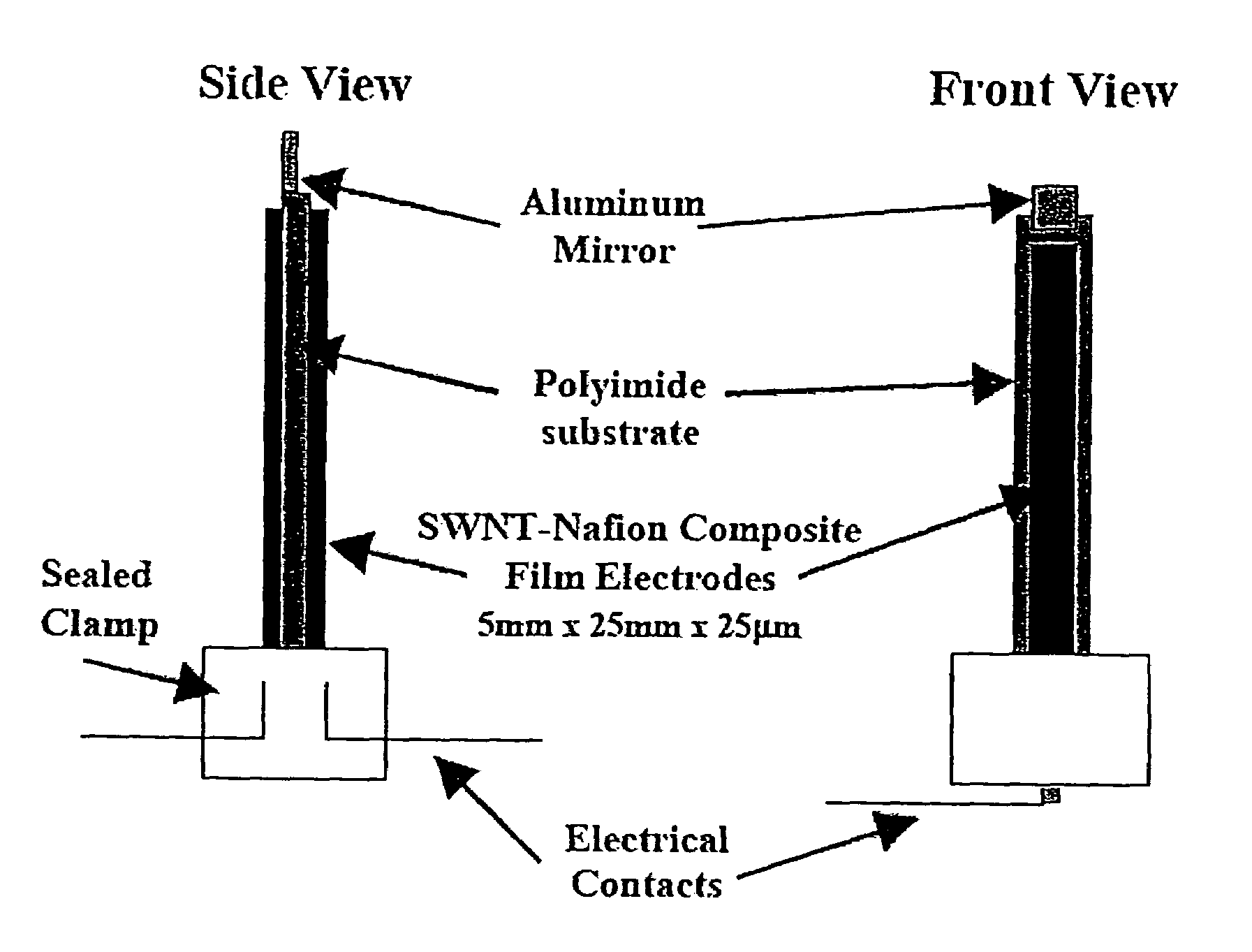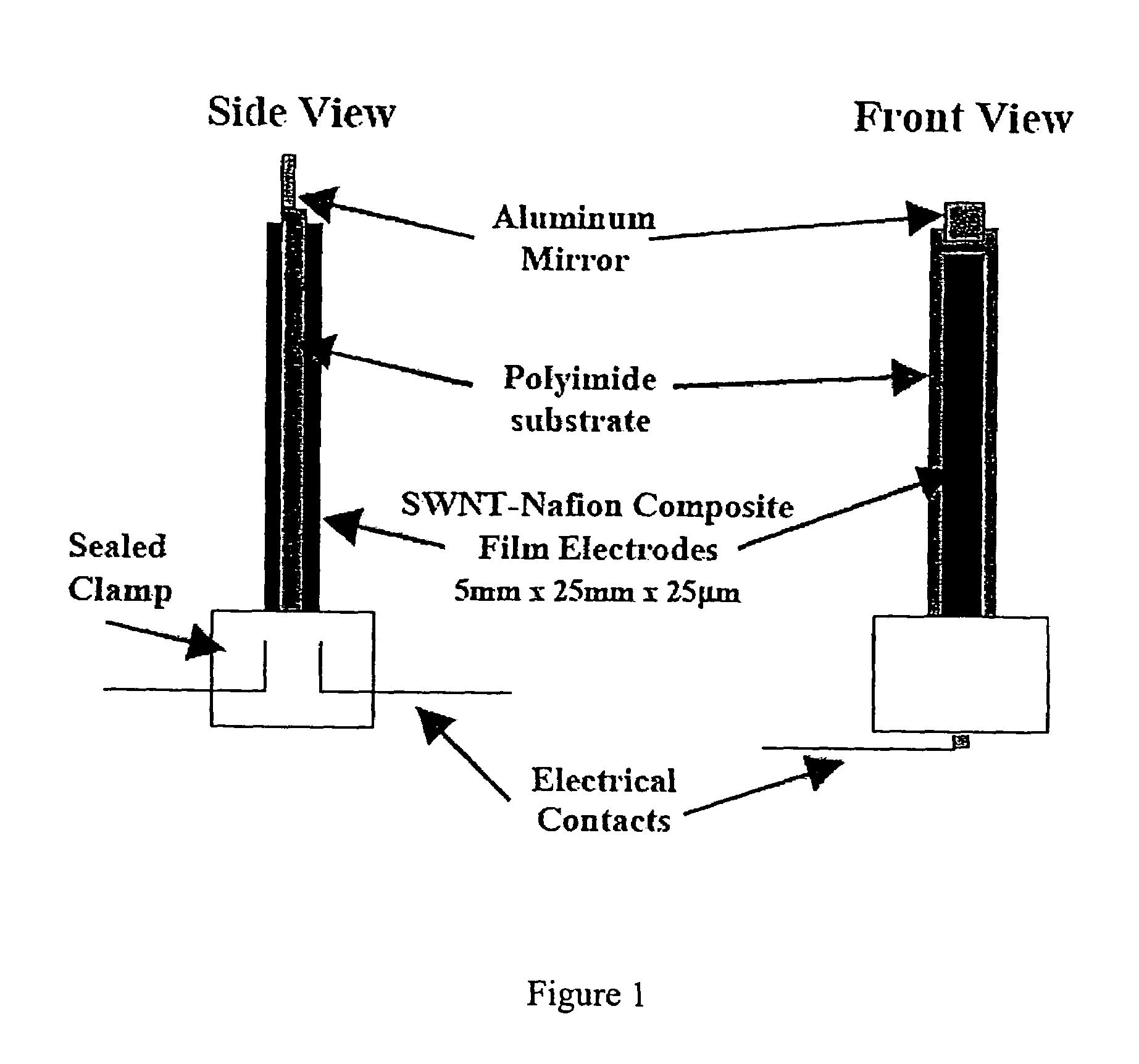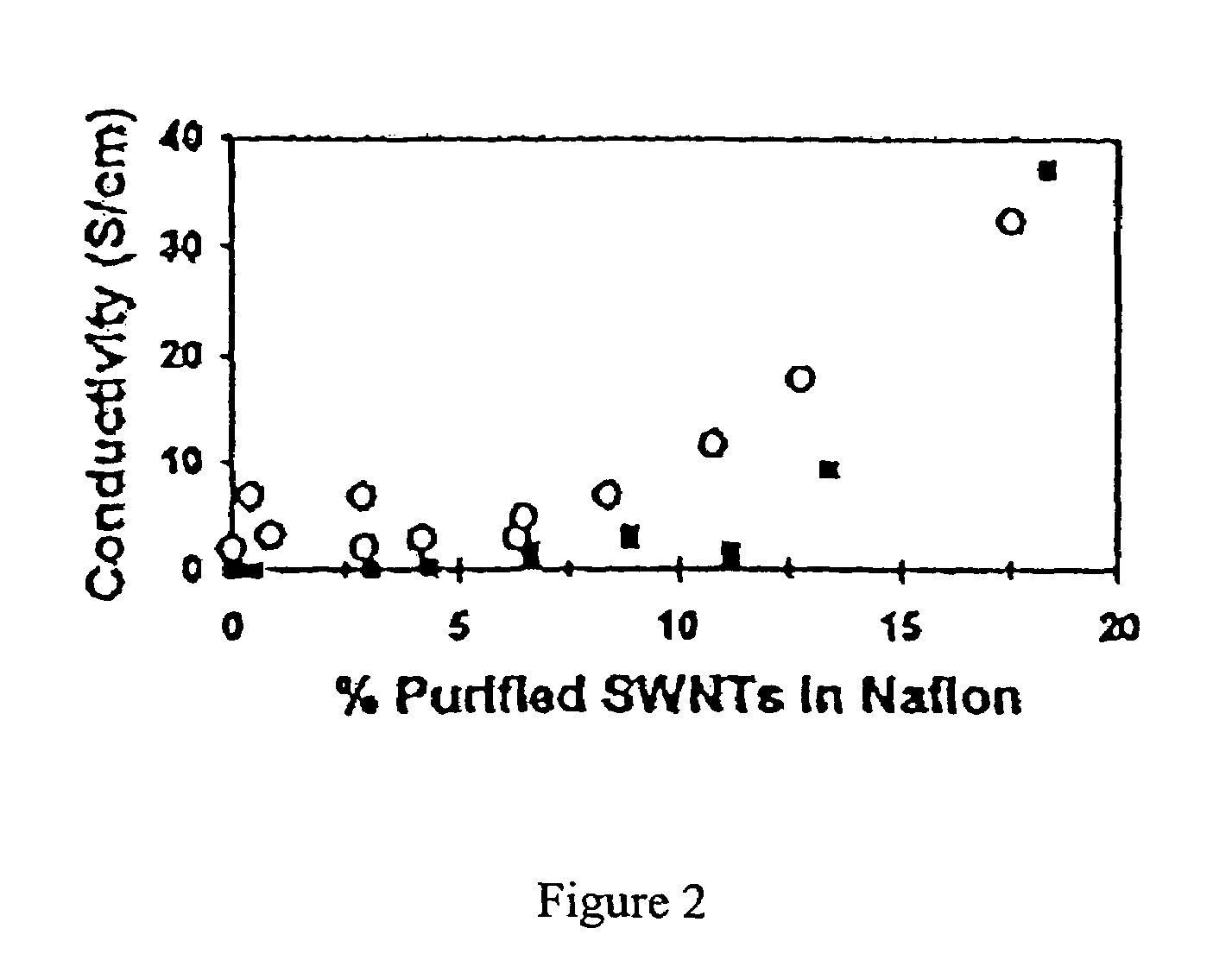Carbon nanotube-polymer composite actuators
a carbon nanotube and polymer technology, applied in the direction of electrochemical generators, cell components, non-aqueous electrolyte cells, etc., can solve the problems of limited cycle life, ipmc actuators' disadvantage of surface metal coating delamination, etc., to increase conversion rate, prolong life cycle, and improve conversion efficiency
- Summary
- Abstract
- Description
- Claims
- Application Information
AI Technical Summary
Benefits of technology
Problems solved by technology
Method used
Image
Examples
Embodiment Construction
[0045]The present invention relates to a novel carbon nanotube-polymer composite capable of being used an electrochemical actuator. The carbon nanotube-polymer composite can be synthesized by a number of techniques known in the art including but not limited to: electro spinning, melt polymerization extrusion, solution processing, co-polymerization, etc.
[0046]One preferred method for preparing the present invention generally comprises the following:[0047]1. Mixing carbon nanotubes (“SWNT's”) with a polymer solution to form a SWNT-polymer solution;[0048]2. (preferable) Homogenizing the SWNT-polymer solution;[0049]3. (preferable) Exposing the SWNT-polymer solution to high shear stirring;[0050]4. (preferable) Centrifuging the SWNT-polymer solution;[0051]5. (preferable) Casting the SWNT-polymer solution to form a composite film or fiber;[0052]6. (preferable) Stabilization the cast SWNT-polymer composite;[0053]7. Drying to SWNT-polymer composite.
[0054]Steps 2-5 are optional and are intend...
PUM
| Property | Measurement | Unit |
|---|---|---|
| weight percent | aaaaa | aaaaa |
| elongation | aaaaa | aaaaa |
| voltages | aaaaa | aaaaa |
Abstract
Description
Claims
Application Information
 Login to View More
Login to View More - R&D
- Intellectual Property
- Life Sciences
- Materials
- Tech Scout
- Unparalleled Data Quality
- Higher Quality Content
- 60% Fewer Hallucinations
Browse by: Latest US Patents, China's latest patents, Technical Efficacy Thesaurus, Application Domain, Technology Topic, Popular Technical Reports.
© 2025 PatSnap. All rights reserved.Legal|Privacy policy|Modern Slavery Act Transparency Statement|Sitemap|About US| Contact US: help@patsnap.com



